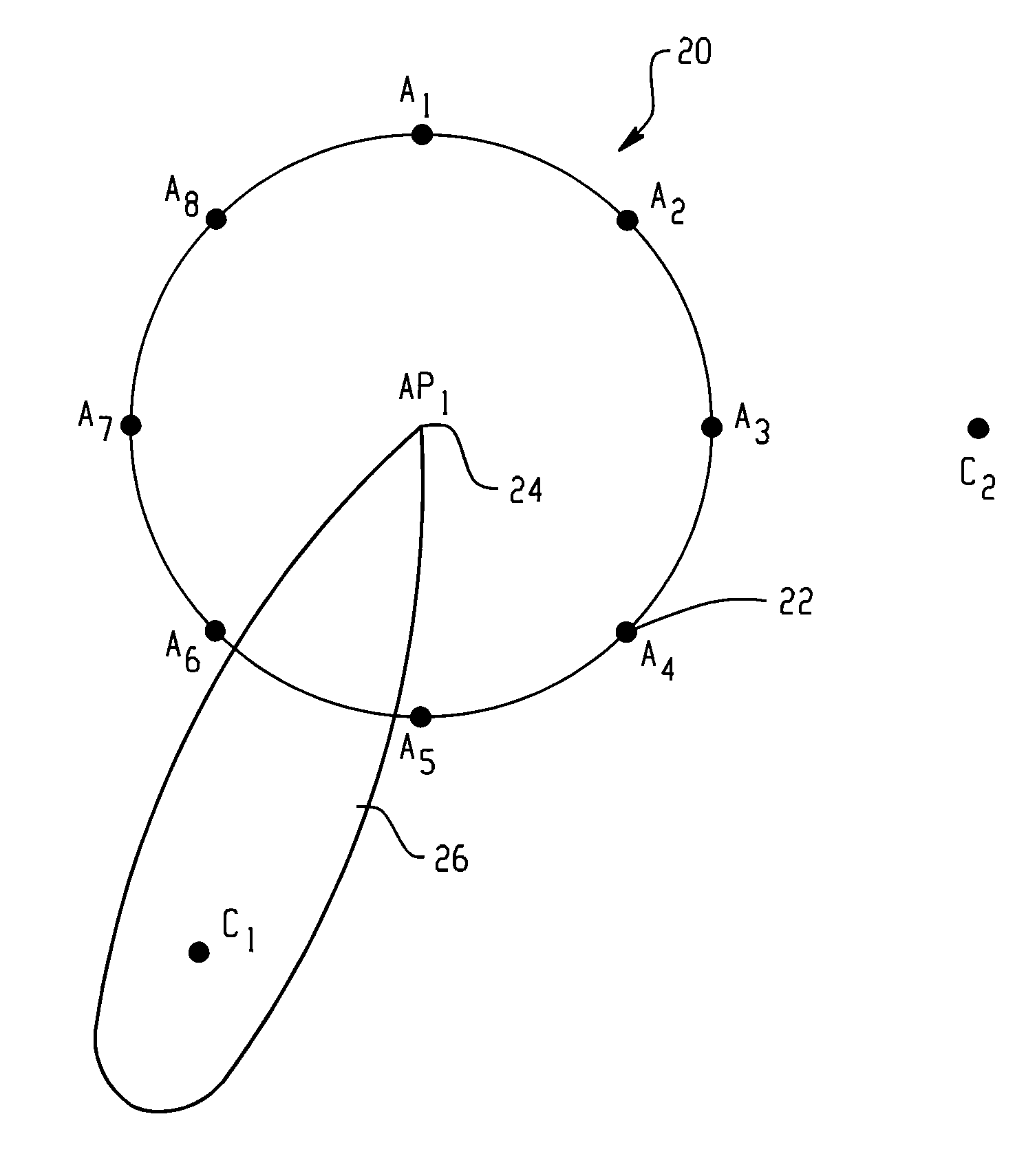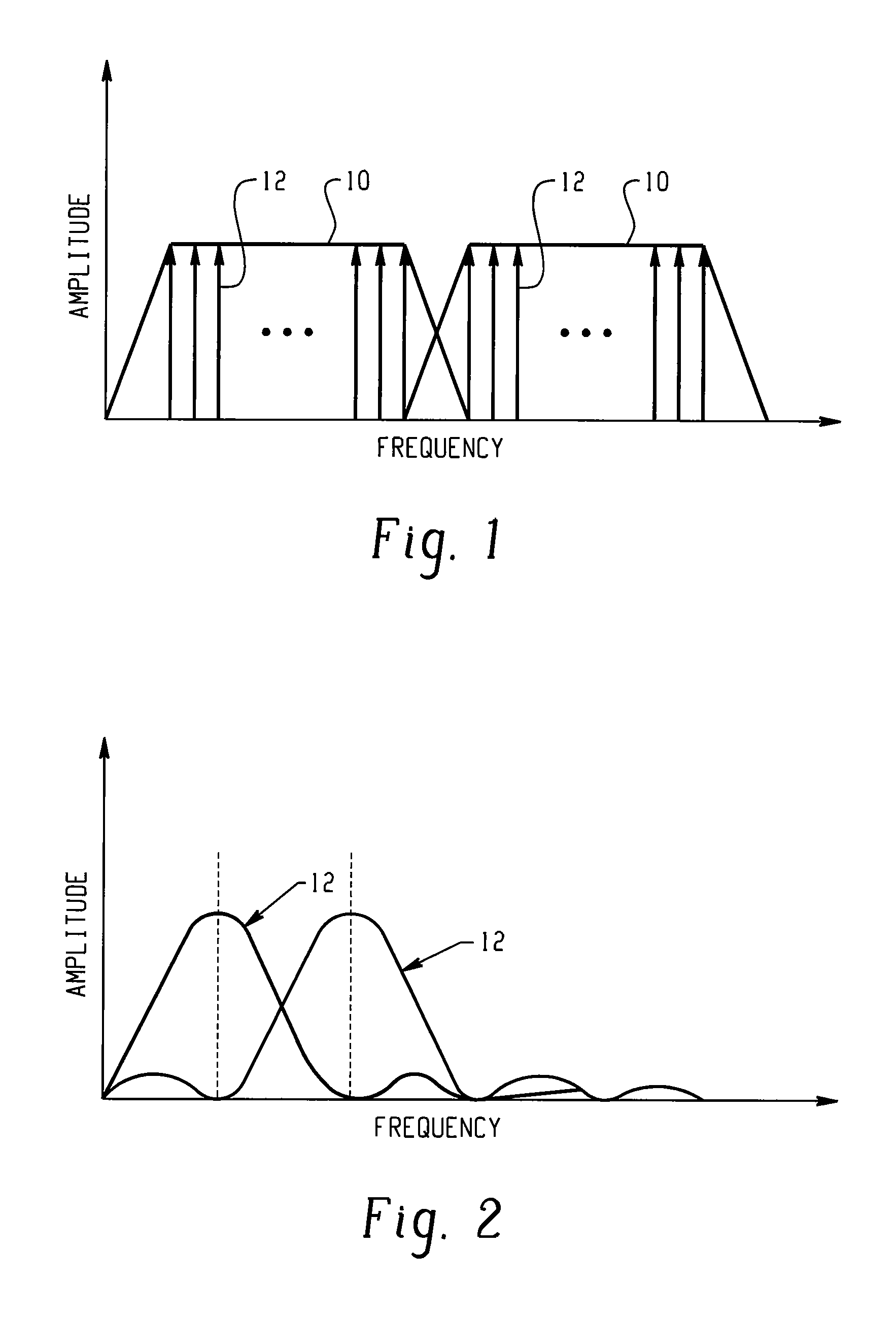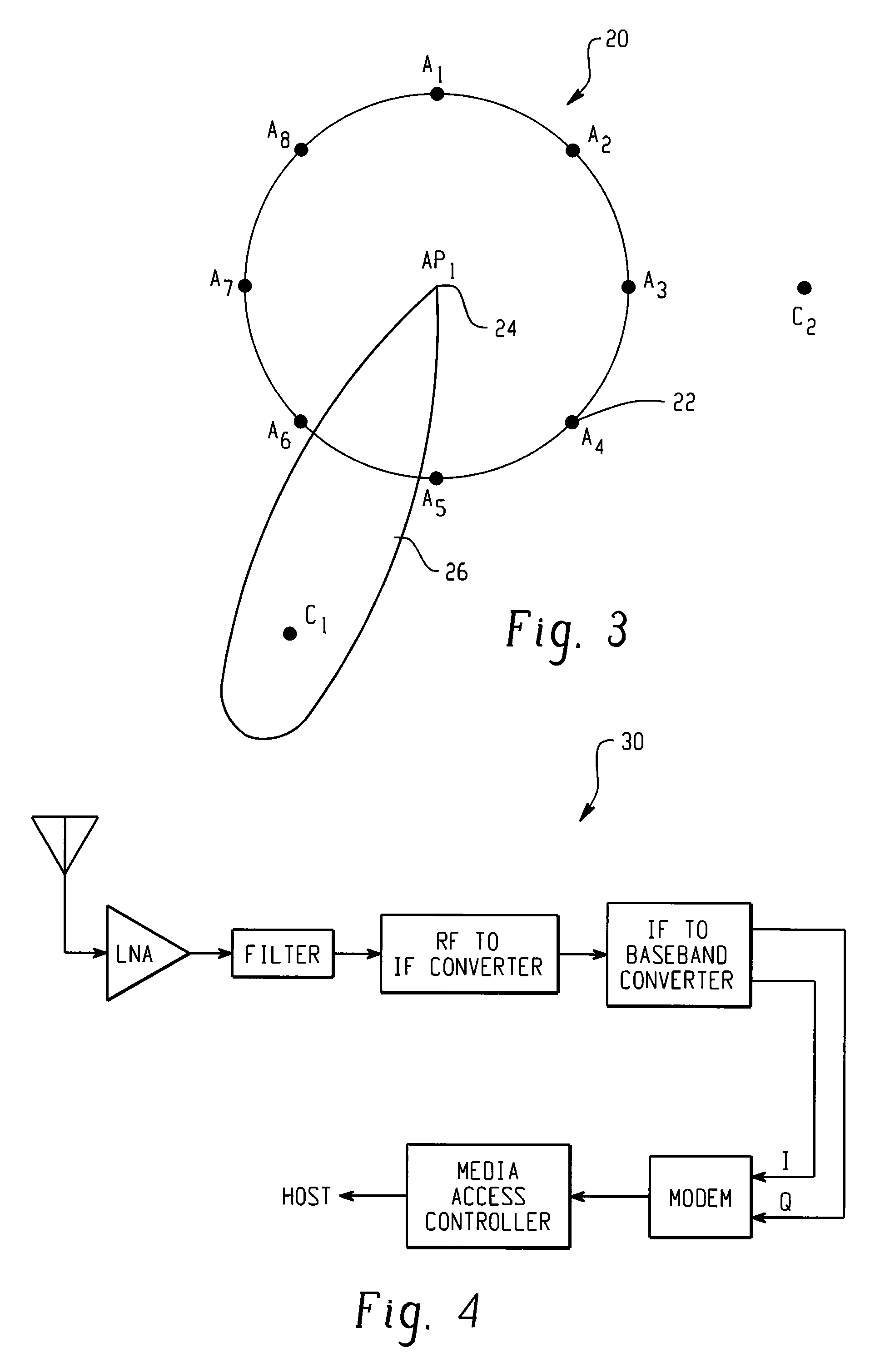Method to decouple assess point association from directional antennas
a technology of directional antennas and assess points, applied in the field of wireless local area network (wlan) technology, can solve the problems of limited wireless connection concurrentness, increased demands, and inability to expand, and achieve the effects of reducing packet collisions, reducing network throughput, and increasing versatility of operation
- Summary
- Abstract
- Description
- Claims
- Application Information
AI Technical Summary
Benefits of technology
Problems solved by technology
Method used
Image
Examples
Embodiment Construction
[0021]Improved results over previous-type WLAN schemes are obtained with the method and implementation of network communication in accordance with the present invention. One or more network access points 24, are provided for communicating with a plurality of clients over a number of channels, where each channel includes a plurality of carrier frequency bands. As a special feature of the invention, the access point 24 is equipped with the capability for monitoring one or more dedicated carrier frequency bands for new clients seeking to associate with the network. A new client entering the cell or coming alive within the cell preferably detects a beacon signal from the access point 24 over the dedicated carrier band and sends a response to the access point 24 requesting association. Alternatively, the client may send an association request directly to the access point 24 upon activating within the cell. In either case, the dedicated carrier is monitored and new clients are detected ov...
PUM
 Login to View More
Login to View More Abstract
Description
Claims
Application Information
 Login to View More
Login to View More - R&D
- Intellectual Property
- Life Sciences
- Materials
- Tech Scout
- Unparalleled Data Quality
- Higher Quality Content
- 60% Fewer Hallucinations
Browse by: Latest US Patents, China's latest patents, Technical Efficacy Thesaurus, Application Domain, Technology Topic, Popular Technical Reports.
© 2025 PatSnap. All rights reserved.Legal|Privacy policy|Modern Slavery Act Transparency Statement|Sitemap|About US| Contact US: help@patsnap.com



